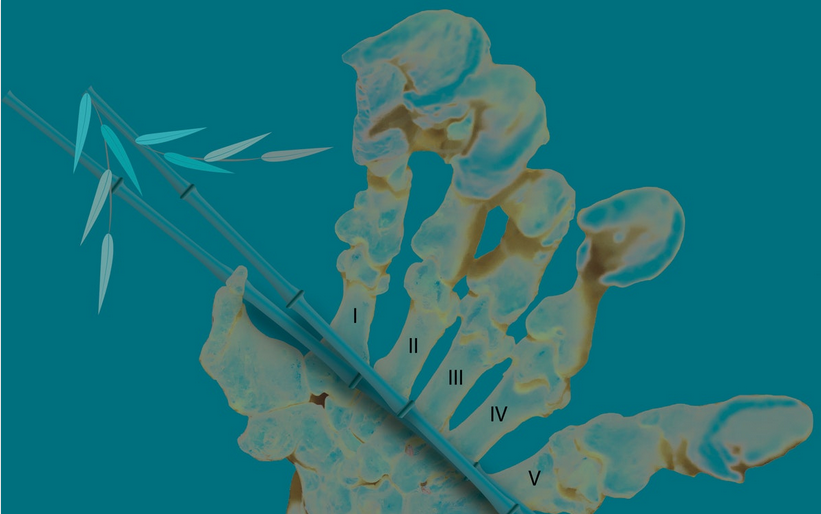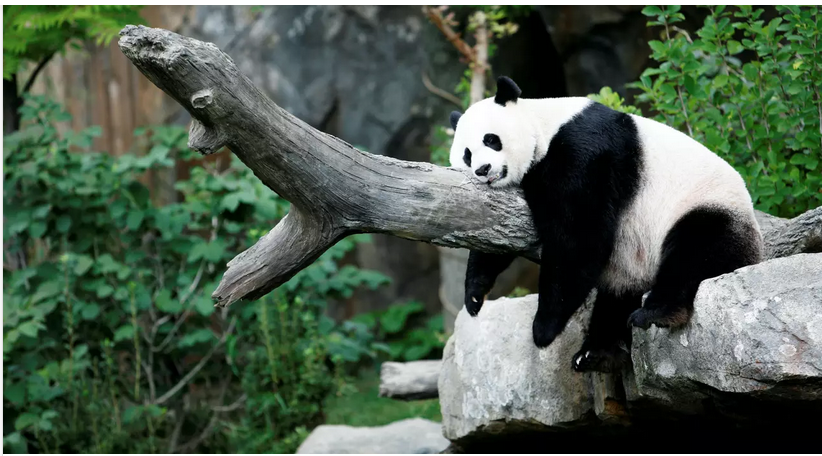-6million-year-old fossils reveal secret of the panda's false thumb
Giant panda eats bamboo inside a barn at the Moscow Zoo in Russia -
Fossils excavated in China are helping scientists better understand one of the wonders of evolution: the giant panda 's false thumb , which helps this herbivore bear eat the bamboo that makes up most of its diet.
On Thursday, researchers said that they had discovered near the city of Zhao Tong in the northern province of Yunnan, fossils dating back about 6 million years of an extinct panda called Ellorarctus. Sesame seeds.
It is very similar to the pseudo-thumb of the present-day panda, but is slightly longer and lacks the inner claw at the end of the present species' hand, which helps it handle bamboo sticks, shoots, and roots as it devours.
An illustration of a panda's false thumb bone – REUTERS
This false thumb reinforces the five fingers that are currently on the panda's hand. The hand of a bear lacks the opposite thumb in humans and various primates, which enables grasping and manipulation of objects using fingers. The false thumb performs a similar function.
few numbers
The panda uses its pseudo-thumb as the opposite, immature thumb of grasping bamboo, which is similar to our thumb except that it is in the wrist, and much shorter than the thumb, said Xiaoming Wang, a paleontologist at the Natural History Museum in Los Angeles County and lead author of the research published in the journal Scientific Reports. The human".
Eloraractus is an ancestor of the present-day panda, but is smaller, albeit with anatomical features that suggest a similar lifestyle that includes a bamboo-based diet.
An illustration of a panda of the type Ellorarctus that lived 6 million years ago – REUTERS
Researchers first found the arm bone of the panda alararctus in 2010, then discovered the false teeth and thumb in 2015, giving them a better understanding of the animal. So far, the oldest known evidence of this thumb-like structure comes from fossils from about 49,000 to 102,000 years ago in the same species of panda that exist today.
The panda is one of the eight species of bears in the world, and was once inhabiting large swathes of Asia. It now lives mainly in the temperate forests of the mountains of southwest China, and its number in the wild is estimated to be less than 2,000.
The panda's diet is 99% vegetarian, although it occasionally eats small animals and carrion. Due to the inefficiency of the digestive system, the panda consumes large quantities of bamboo ranging between 12 and 38 kilograms per day to meet its nutritional needs.
https://asharq.com/ar/35gD5kzmluNhzVUfq7yHZC-%D8%AD%D9%81%D8%B1%D9%8A%D8%A7%D8%AA-%D8%B9%D9%85%D8%B1%D9%87%D8%A7-6-%D9%85%D9%84%D8%A7%D9%8A%D9%8A%D9%86-%D8%B3%D9%86%D8%A9-%D8%AA%D9%83%D8%B4%D9%81-%D8%B3%D8%B1-%D8%A7%D9%84%D8%A5%D8%A8%D9%87%D8%A7%D9%85/?fbclid=IwAR0ZeEPOBUt8Rg5pnpbj1V1P2HUTxY2GRQ9Mg_m_DSPq2neRz1JYS4E4nrs





